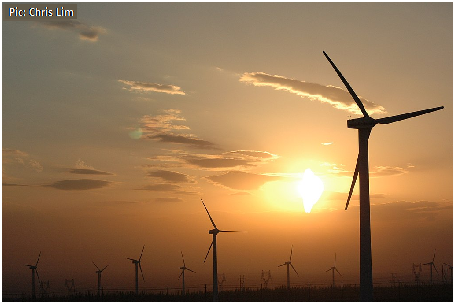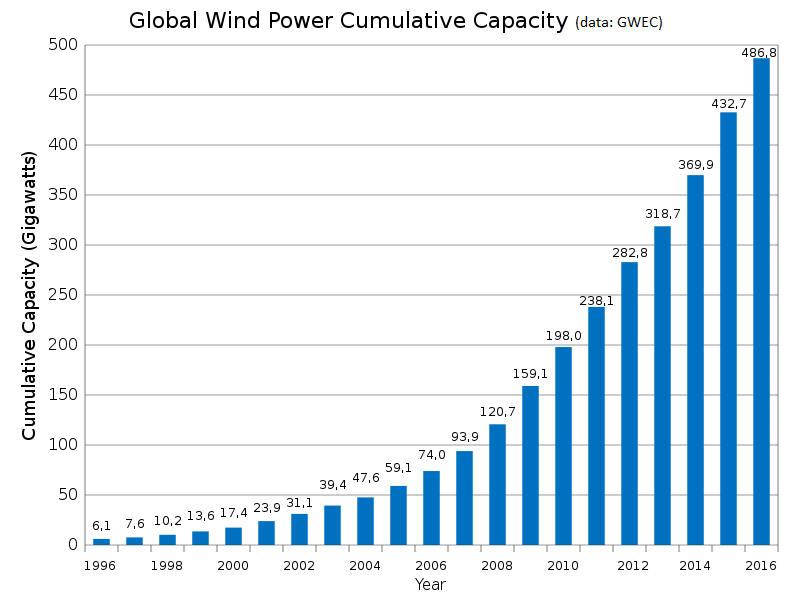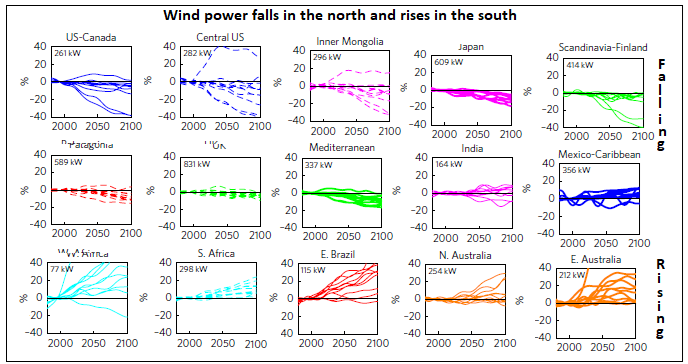
Climate change may impact the global wind-power plan, says S.Ananthanarayanan.
Wind power, as a source of emission-free energy, is an important part of the global strategy to cut down on fossil fuels. The world’s installed wind capacity, accordingly, has grown by an average 22% every year since 2006.

A study by Kristopher B. Karnauskas, Julie K. Lundquist and Lei Zhang, from the University of Colorado Boulder, in USA, published in the journal, Nature Geoscience, however, says continued growth of wind power would need major changes in the location of installations, as wind patterns are changing due to global warming. “Consideration of future build-out of wind energy resources should also consider climate change impacts on offshore wind energy, as well as the impacts of wind farms on local and regional climate,” the study says.
Wind power met 2.6% of the world’s electricity demand in 2012 and the plan is to increase the share to 8.12% in 2020, and to 30% by 2050. The paper notes that the way wind farms are being sited, designed and built, on the way to meeting targets, is with the assumption that pattern of winds will remain constant, within limits of annual variability. “However, climate, including the global atmospheric circulation, is already changing in response to anthropogenic radiative forcing and is projected to continue doing so in the coming decades. Therefore, the economic and engineering calculus of wind resource management should consider projected changes in surface climate,” the paper says.
The paper says that although there have been a good many studies of the evolution of wind trends, these have been localised or regional. Within limited geographical boundaries, the studies have found relationships with wind energy and factors like El Nino, topography or climatic variations. Different Global Climate Model (GCM) simulations have been used to study the impact on large land masses or particular regions. None of these, however, the paper says, has comprehensively examined how climate change would affect the global distribution of wind resources, in the context of tapping winds for energy to replace fossil fuels.
The present study undertakes to fill the gap, with the help of ten sophisticated Global Climate Models (also known as General Circulation Models) to construct a picture of how wind resources would evolve, over a large geographic distribution. And the study has considered two alternative courses of climate change, one driven by high CO2 emission and the other with lower CO2 emission.
GCMs are numerical representations of the physical processes in the oceans, atmosphere and on the land, over the seasons and worldwide, with simulation of how they change, one affecting the other, over time. The parameters are fixed, based on data as far as available for the past periods and tested, and the models are then used to forecast future climate patterns.
As climate is a complex of a great many variables, there can be no single representation. There are hence several models and the average of different predictions would be more reliable than any one. There is interest, for instance, in winds that blow from the west to the east at high altitudes, which affect airliner speeds and fuel consumption. A recent study considered 34 reputed GCMs to make its projections. The ten GCMs selected for the present study were those that had the necessary output variables that would help calculate wind power, which could drive turbines. The models needed to provide outputs under the future CO2 emission patterns from 2006 to 2100 and for the historical period from 1850 to 2006. The wind speeds at a height of 10 metres were used in the study and the ten GCMs used could fairly satisfy the requirements.
The main result of the study was that the changes in wind power, due to climate change, were not similar in the northern and southern hemispheres. It was found that there was decrease of wind power in the mid latitudes in the northern hemisphere and increase over the tropics and in the southern hemisphere. While the change in the northern hemisphere appears equally in both simulated rates of CO2 emission, the changes in the southern hemisphere are found to be sensitive to the level of emission assumed. The decrease in wind power in the central US is found to be 8% and 14% respectively by 2050 and 2100 with slow rise in CO2, and by 10% and 18% with faster rise in CO2. The rise in wind power in Brazil is a high 21% and 42% in 2050 and 2100 respectively with high rise of CO2, but just about 5% and 10% with low rise of CO2. Similarly, in north eastern Australia, the increase in wind power is 41% by 2010, but only with high rise in CO2.

The decrease of wind power in the north appears to agree with climate change feature of warming of the poles and the decrease in the tropics and the south to arises from increased difference in land and sea temperature, the paper says. In a globally integrated sense, however, “the decrease in the Northern Hemisphere is partially balanced by an increase in the Southern Hemisphere, but only under the high greenhouse gas emissions scenario,” the paper says.
The study discusses the possible error that arises because of using GCM data for estimating wind power. For one, the wind speed data that is available is only over a grid where points are separated by about 100 km. The study examines the variability that this coarseness introduces and finds that it is not significant. Another limitation is that the data used is at the 10 metre height, while wind turbines would typically be 40 to 120 metres above the ground. In a trial carried out, it was seen that although moment to moment conditions at a height of 80 metres are not correctly represented by the wind speed at 10 metres, the averages over a month were reasonably close to each other. A third potential limitation is that the wind speeds were considered, at 10 metres, as the average over a month. Whereas winds change frequently, even every hour. In this case too, the wind power estimated based on hourly data and that based on the monthly average were found to be well correlated.
When actual wind turbines or wind farms are set up, careful and detailed wind power surveys are carried out for optimum location and geometry. The study now carried out cannot serve this purpose, but the results are clear that planning of wind energy at many areas of the globe would need to consider the changes that are expected because of warming, and according to the rate of CO2 build-up that unfolds.
------------------------------------------------------------------------------------------ Do respond to : response@simplescience.in